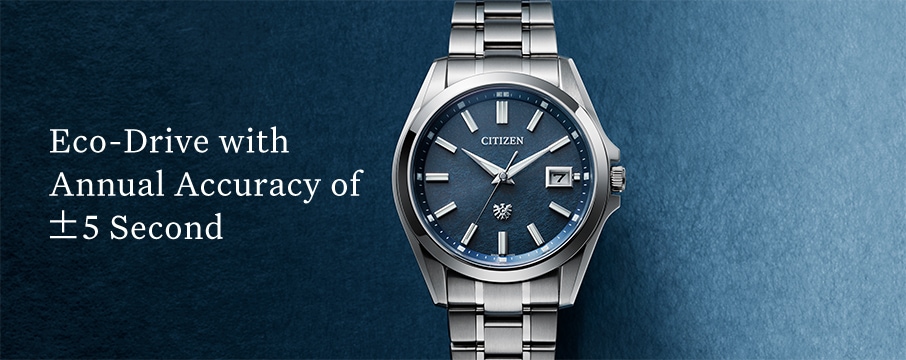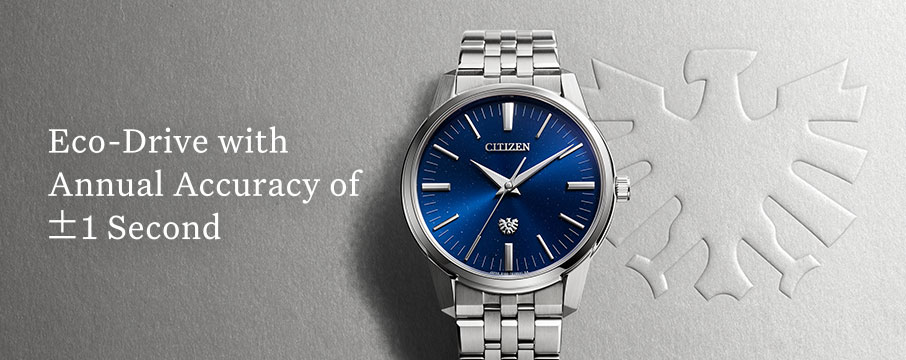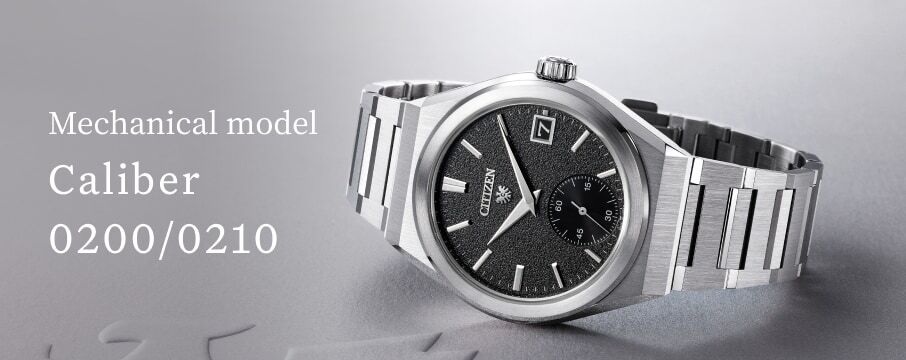Features 01
The quest for the perfectly pure second
A watch with annual accuracy of ±1 second undertakes to mark the millions of seconds in a year with annual deviation of less than one second. Limiting deviation to near zero is a challenge that many watchmakers shy away from, but one that The CITIZEN was happy to take on. We elected to use an AT cut crystal oscillator in place of the tuning fork-shaped crystal oscillator used in most quartz watches. We then focused on making the individual components—the hands, gears, motor, circuit, and so on—more precise. Finally, by incorporating Eco-Drive, we created a watch that needs only light to consistently tell the time with accuracy of ±1 second per year.
AT CUT CRYSTAL OSCILLATOR
Avoiding deviations, large and small
Quartz watches tell the time, second by individual second, by exploiting the way in which crystals oscillate at a fixed cycle. Although quartz watches are extremely precise compared to mechanical watches, small deviations can occur when external factors like temperature and gravity cause changes in the frequency of the crystal oscillator. These levels of deviation are hardly problematic for your ordinary quartz watch; when, however, the goal is accuracy of ±1 second per year, they represent a major deviation that cannot be overlooked. That is why we opted to use an AT cut crystal oscillator which is resistant to temperature change and gravity.
The AT cut crystal oscillator also has the merit of exhibiting a lower ageing effect in its oscillation soon after completion than tuning fork-shaped crystal oscillators. As well as ensuring stability for our AT cut crystal oscillators through repeated ageing, we pretest their frequency as part of the manufacturing process, selecting only those that exhibit minimum change over time. In this way, we only use AT cut crystal oscillators with superior stability.

TEMPERATURE
Resistant to temperature change
To manufacture a crystal oscillator, the first step is to cut it from a hexagonal source crystal. The angle of the cut determines the crystal oscillator’s thermal characteristics (i.e. frequency variability in response to temperature). As the diagram below shows, AT cut crystal oscillators have excellent thermal stability at normal temperature levels, meaning that temperature changes have minimum impact on them.

GRAVITY
Impervious to gravity
Unlike clocks, watches end up in different orientations depending on the position of the wearer’s arm. They also experience different levels of gravitational acceleration from these arm movements. Gravity has an impact on crystal oscillators. Because the standard tuning fork-shaped crystal oscillator has prongs that vibrate in empty space, changes in orientation can cause minor frequency deviations. By contrast, the shape of the AT cut crystal oscillator makes it more stable and less influenced by changes in posture. It will keep marking the seconds with perfect precision whatever the watch’s orientation.







